The upper regions of the male statue-menhirs display particular facial characteristics, such as long, arched eyebrows and a well-pronounced nose. The origin and ideological development of the male statue-menhirs seems to clearly differentiate itself from the non-representational menhirs; namely those menhirs without any particular distinctive features, that are sometimes refined, other times not, that have a slender, subconical form, that are accurate in their workings and that are the original model containing the divinity. Upon this silent and disquieting base, the Sardinians of the First Metal Age (2,700 B.C.) will arrange and blend elements from the cult of the dead such as the “inverted” figure and the hallmark of force and power: the dagger.
Ancestors, tribal leaders of the land and prestigious warriors widely famed for their admirable exploits worthy of immortality: these are the men who will be depicted and deified in statutes of ever-increasing bulk, hymns to the religious sublimation of the new princes of the pantheon.
The face
Present in the upper regions of the statue-menhirs are distinctive facial features: the nose, sometimes eyes, often eyebrows; these are elements that have contributed to the definitive identification of this class of menhirs as the first attempts at representations of humans, even if the slightly underscored nose and the outlined eyes of the “anthropomorphic” menhirs already expressed the desire for such representation. The shape of the upper region of the statue-menhirs, which can be either ogival or rounded-off, in some instances conditions the development of the eyebrows in relation to the nose, as is seen in the menhirs of Laconi, Nurallao and Genoni. In the first case, the ogival form creates an acute angle. In the second case, in which the upper profile is rounded off, the angle between the nose and the eyebrows opens up, creating a veritable “T” shape.
Studies of the models thus far mentioned identify three types of eyebrows:
The noses can be schematically reduced to two types:
The inverted figure
Among the facial typologies, there appears at times an inverted figure, a man depicted upside down, passing from this life to the next, as the underworld itself would have been conceived as an inversion into which the souls of the deceased dived headfirst as they flew from earth.
This motif recalls the watchful petroglyphs found in grottoes such as the “Bue Marino” in Dorgali or similarly those of “Sa Spilunca Manna” in Laconi, or the extraordinary scenography present in the “Domus de Janas of Moseddu” in Cheremule and in “Sas Concas of Oniferi,” where the movement and “flight” of the souls revitalize the mute walls of the charnel houses.
The inverted figure is not always reproduced following the same pattern, save that of the basic representative theme, but is usually depicted with some variation and sometimes with surprising stylistic divergence, almost certainly due to masters who worked under various conditions and at different times.
These details allow five types of inversion to be distinguished:
The dagger
The dagger is the element that characterizes the male menhir-statues. Symbol of virility, force and the inclination toward combat and toward the defense of the personages deified on account of their prestigious and indisputable rank and of their memorable exploits which have not yet been forgotten. The dagger is depicted in a horizontal position located in the mid-lower region of the statue’s body, corresponding to the abdomen and, in the case of Genna Arrèle I of Laconi, just below what is probably a belt. The weapon itself is formed by two triangular blades pointing away from each other and connected by a short grip between them, from which the name “double-dagger” is derived, as it appears in the simplest designs. However, other details allow the design to be interpreted as a dagger with a somewhat pronounced hilt and a sheathed blade of either copper or flint.
In the class of rather advanced statues such as those coming from Piscina ‘e Sali of Laconi, Enrico Atzeni recognizes in the “double-dagger” …the concrete representation of a weapon realistically interpretable as the classic “remedellian” Neolithic model (Copper dagger with triangular blade and reinforcement bands typical of Remedello); it is triangular with a broad, level base; it has long blades which are linear or convex and symmetrically converge to form a sharpened tip; and it has continuous reinforcement ribbing in the center of the body indicated by a fusiform sign or a “V”. Mounted on a large and usually well-developed hilt and orientated toward the left flank of the depicted figure, the dagger more rarely displays a broad, semi-disc pommel: more frequently it reveals a thus far undocumented ogival emphasis that is quite mistakable, given the dimensions, with the shape of the flint, “remedellian” dagger.
Depending on the degree of detail and restoration, the daggers can be classified within one of four groups:
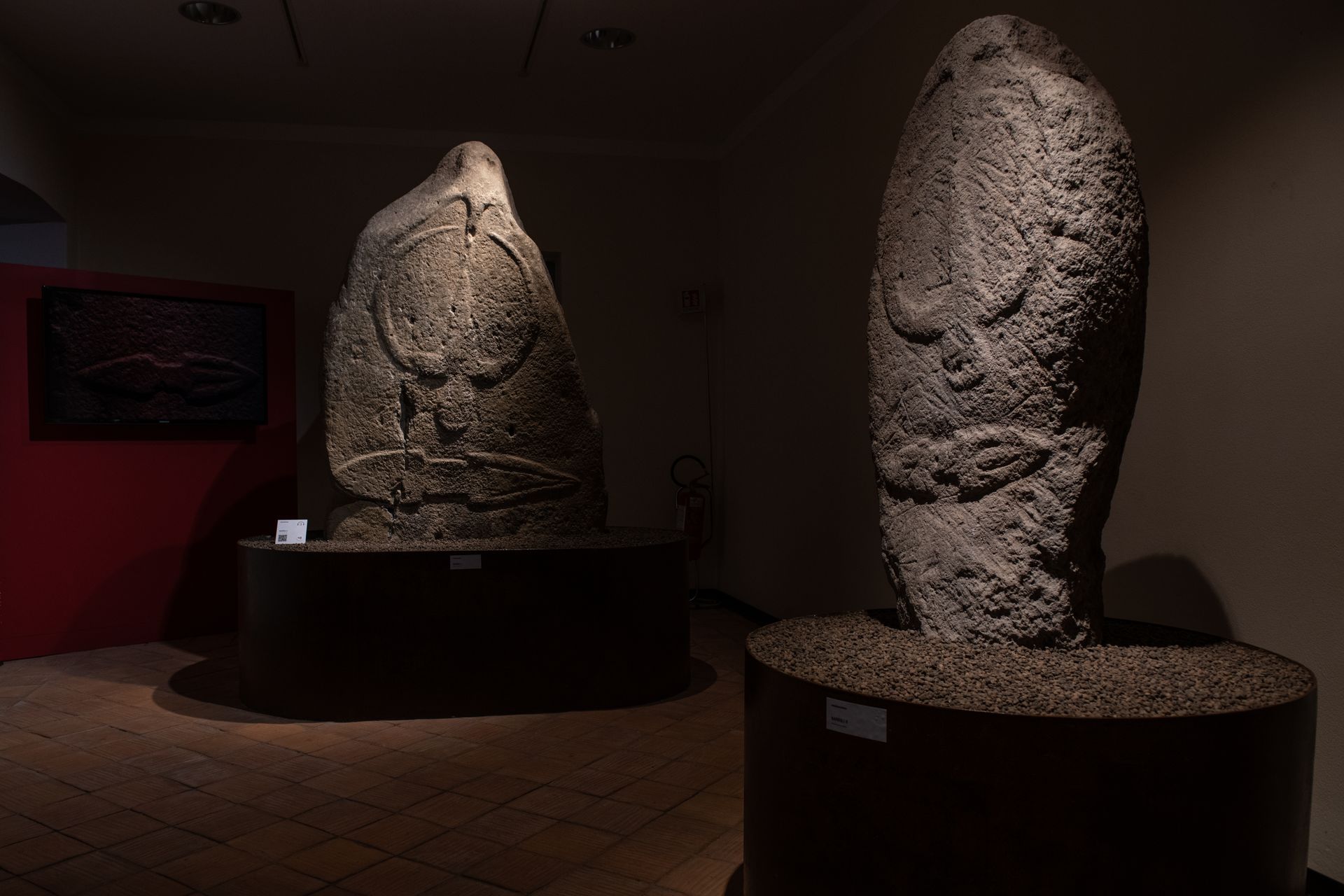 Menhir museum, Barrali I and Barrali II menhirs (Ph. Irene Ollargiu)
Menhir museum, Barrali I and Barrali II menhirs (Ph. Irene Ollargiu)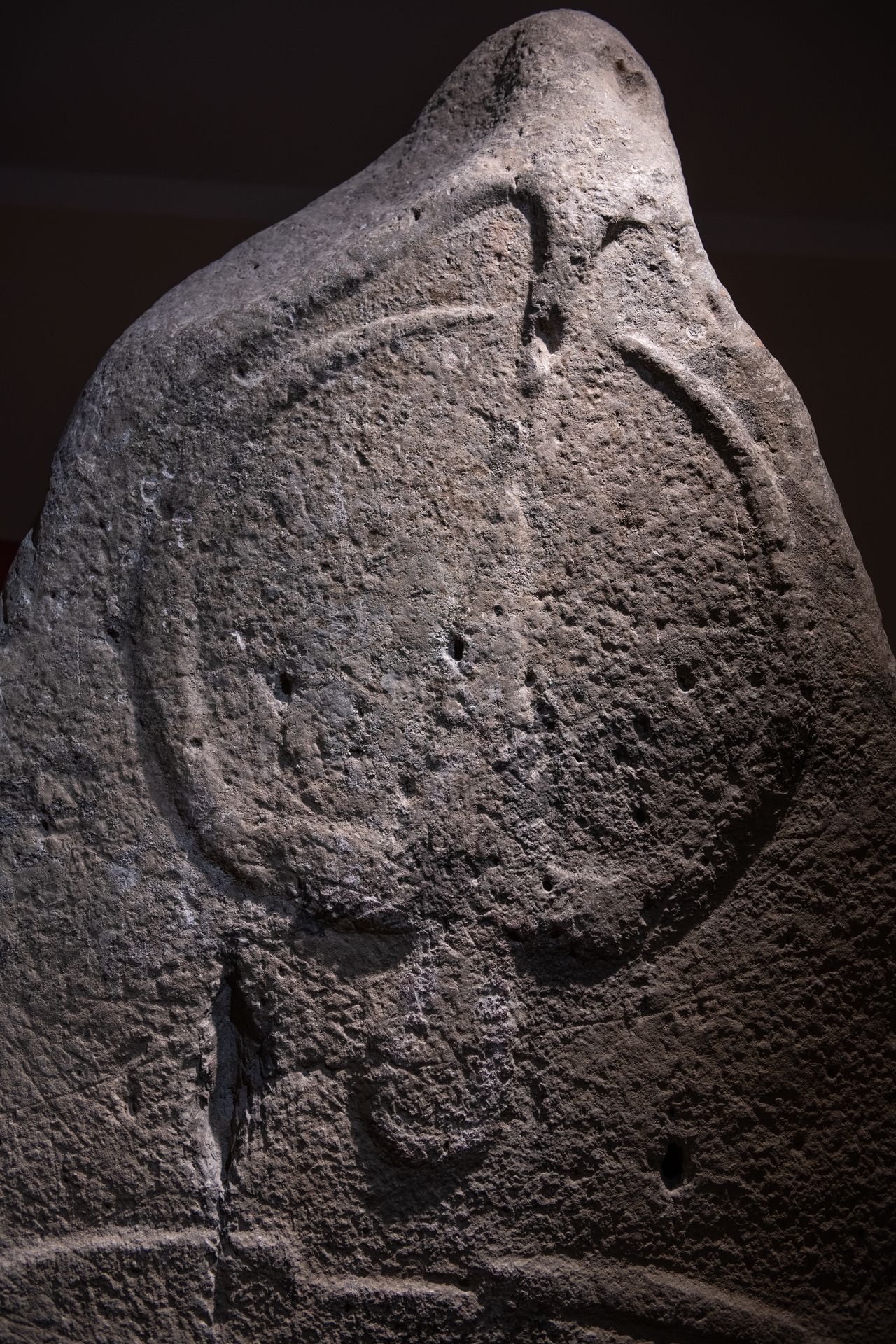
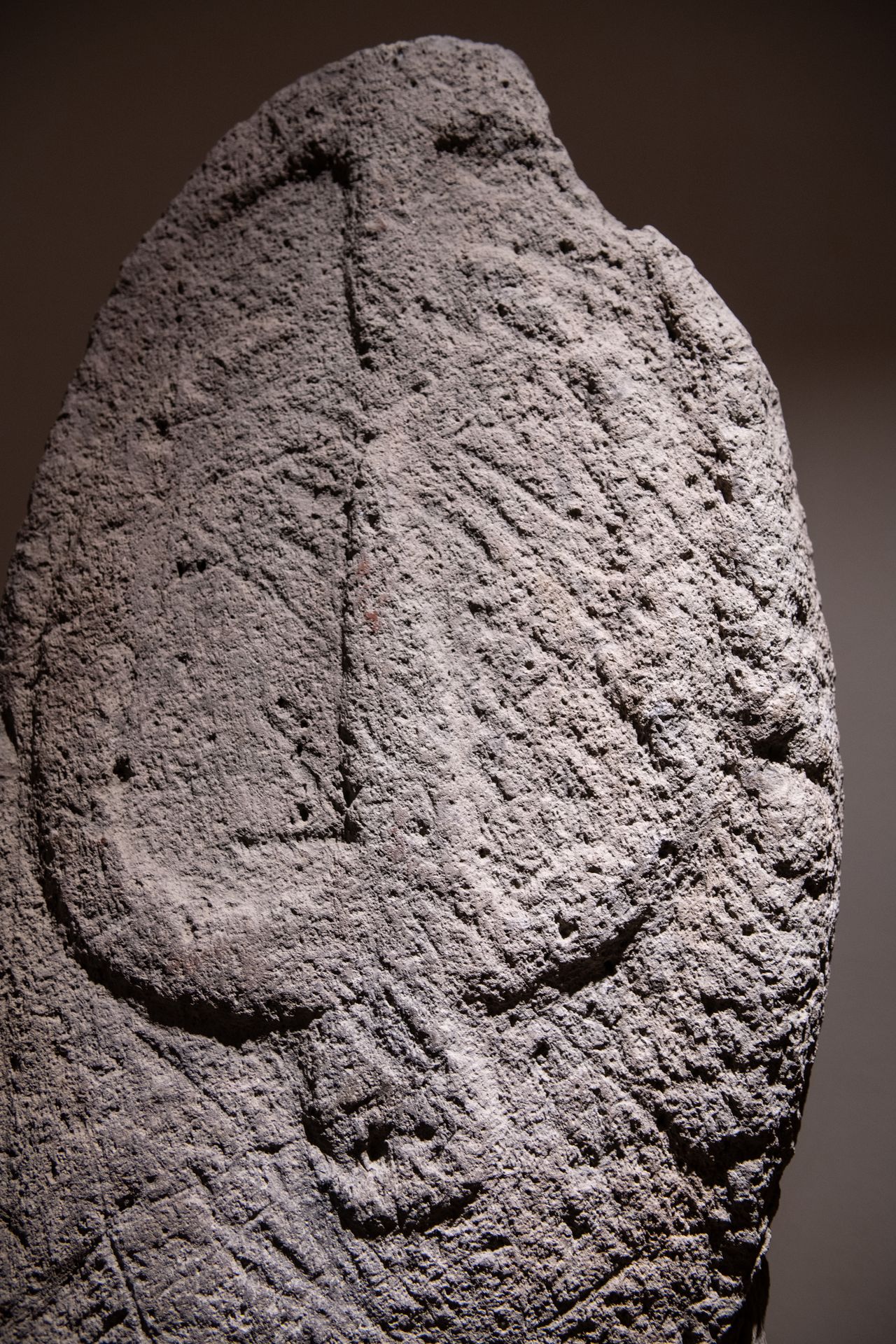 Menhir museum, menhir Barrali II dettaglio del volto e del capovolto (Foto di Irene Ollargiu)
Menhir museum, menhir Barrali II dettaglio del volto e del capovolto (Foto di Irene Ollargiu)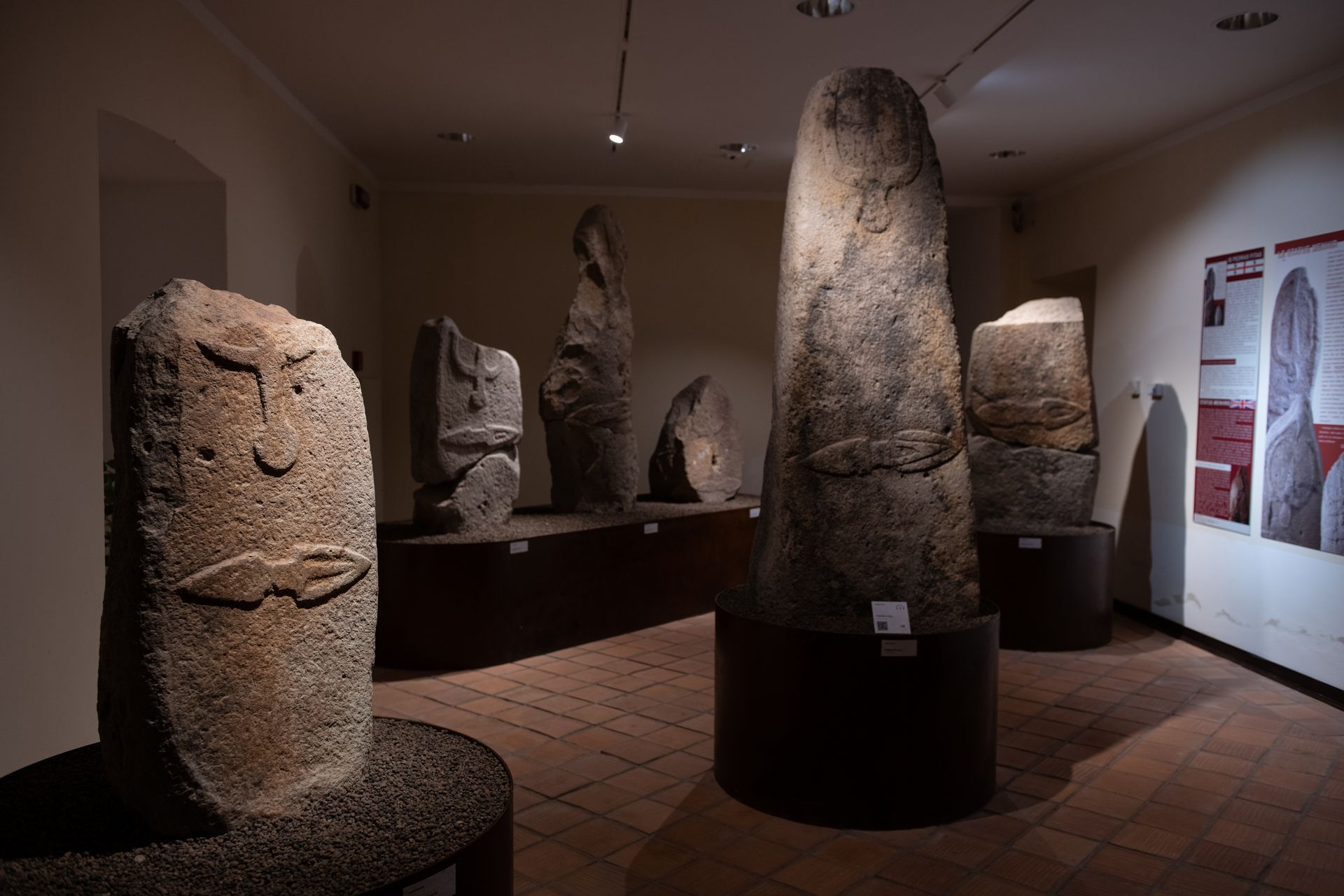 Menhir museum, sala 2 (Foto di Irene Ollargiu)
Menhir museum, sala 2 (Foto di Irene Ollargiu)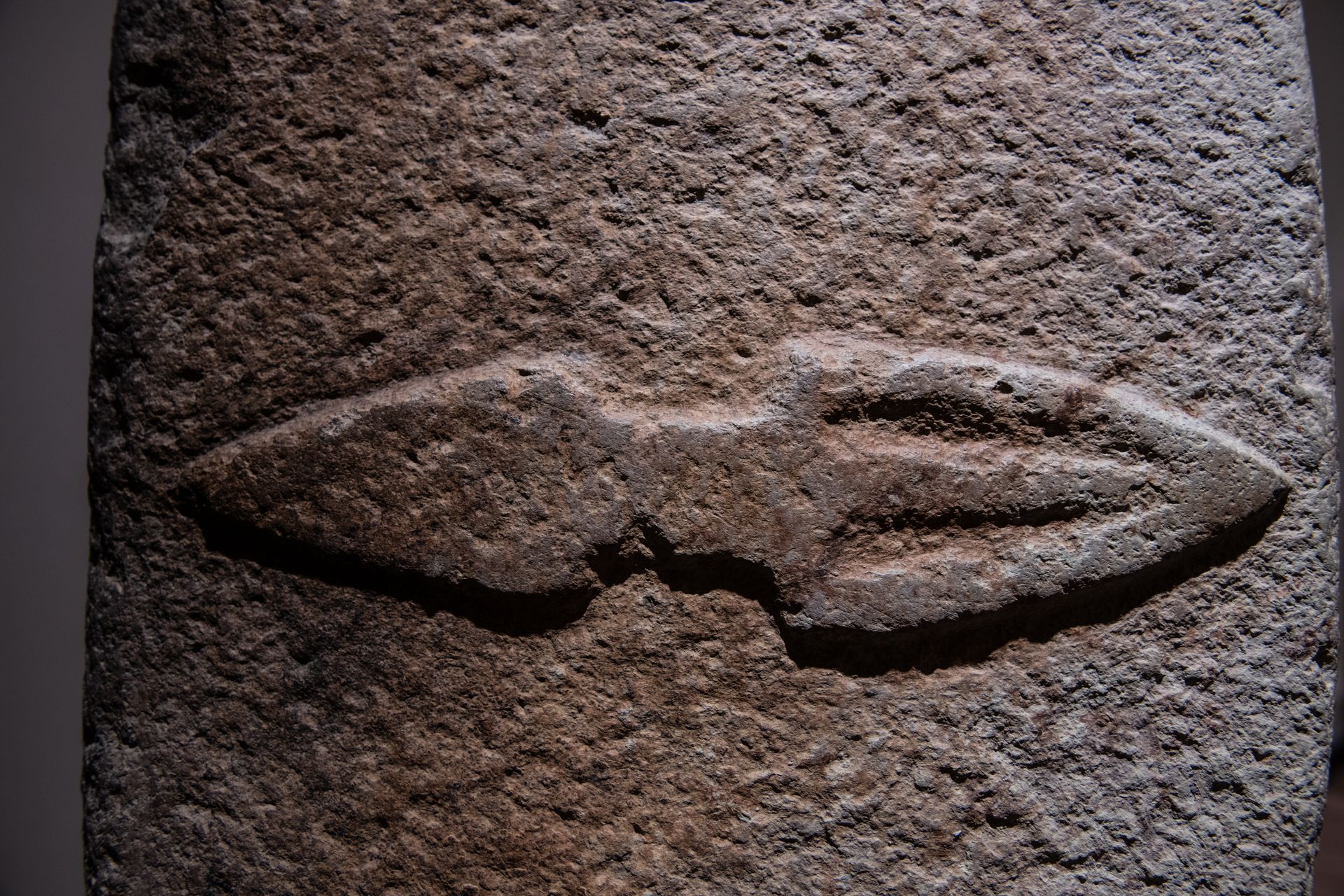 Menhir museum, menhir Piscina 'e Sali IV dettaglio del pugnale (Foto di Irene Ollargiu)
Menhir museum, menhir Piscina 'e Sali IV dettaglio del pugnale (Foto di Irene Ollargiu)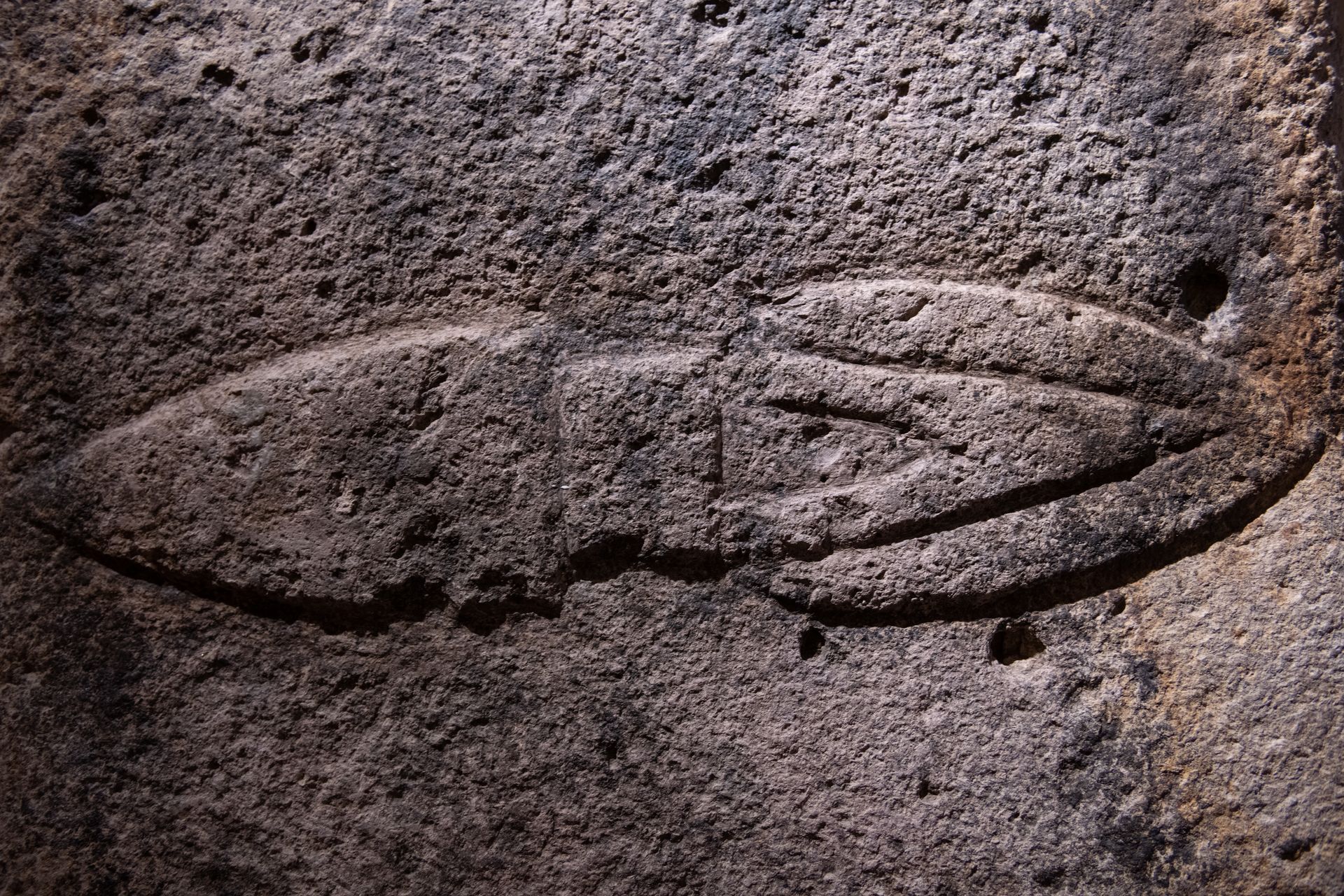 Menhir museum, Piscina 'e Sali I menhir, detail of dagger (Ph. Irene Ollargiu)
Menhir museum, Piscina 'e Sali I menhir, detail of dagger (Ph. Irene Ollargiu)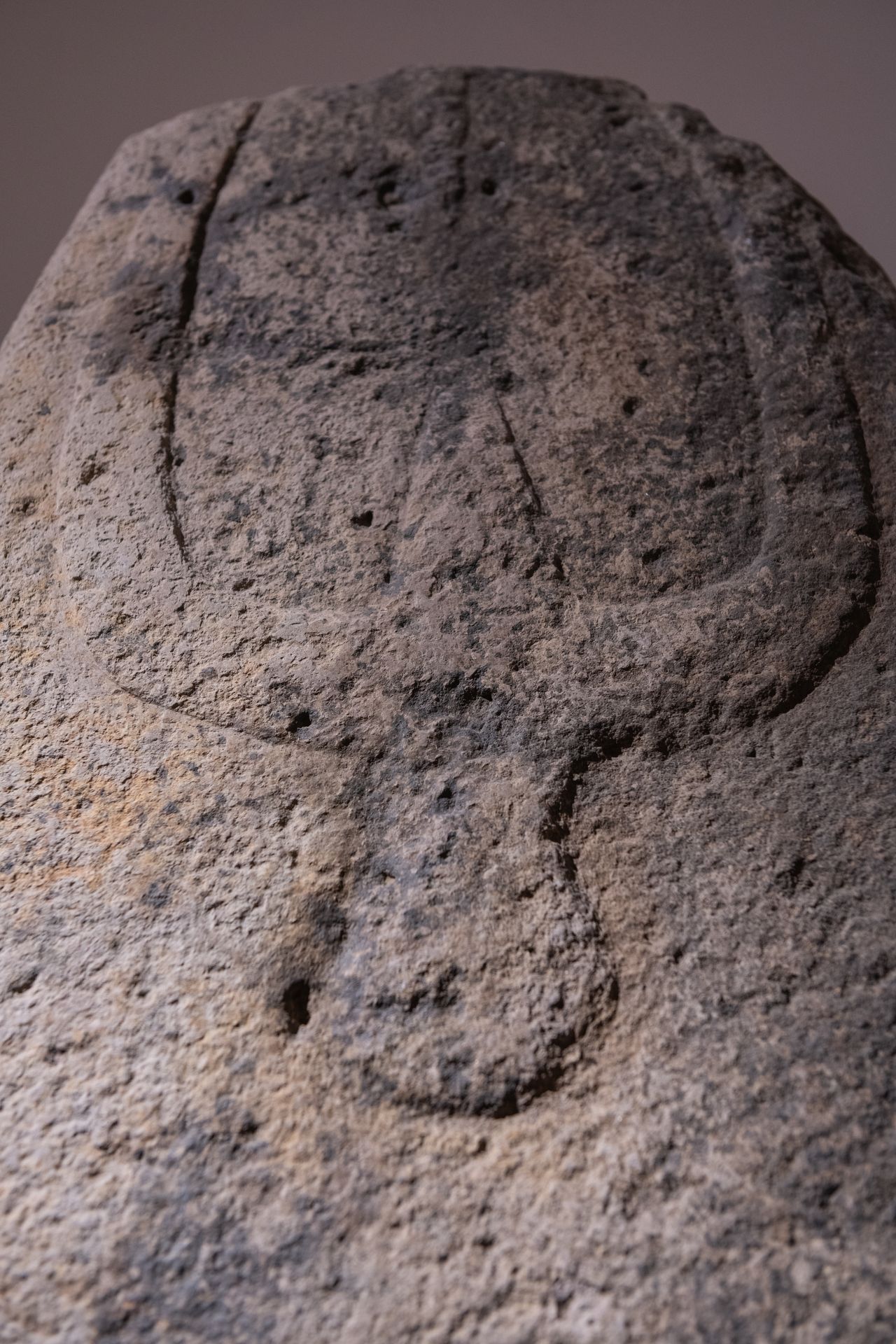 Menhir museum, Piscina 'e Sali I menhir, detail of inverted figure (Ph. Irene Ollargiu)
Menhir museum, Piscina 'e Sali I menhir, detail of inverted figure (Ph. Irene Ollargiu)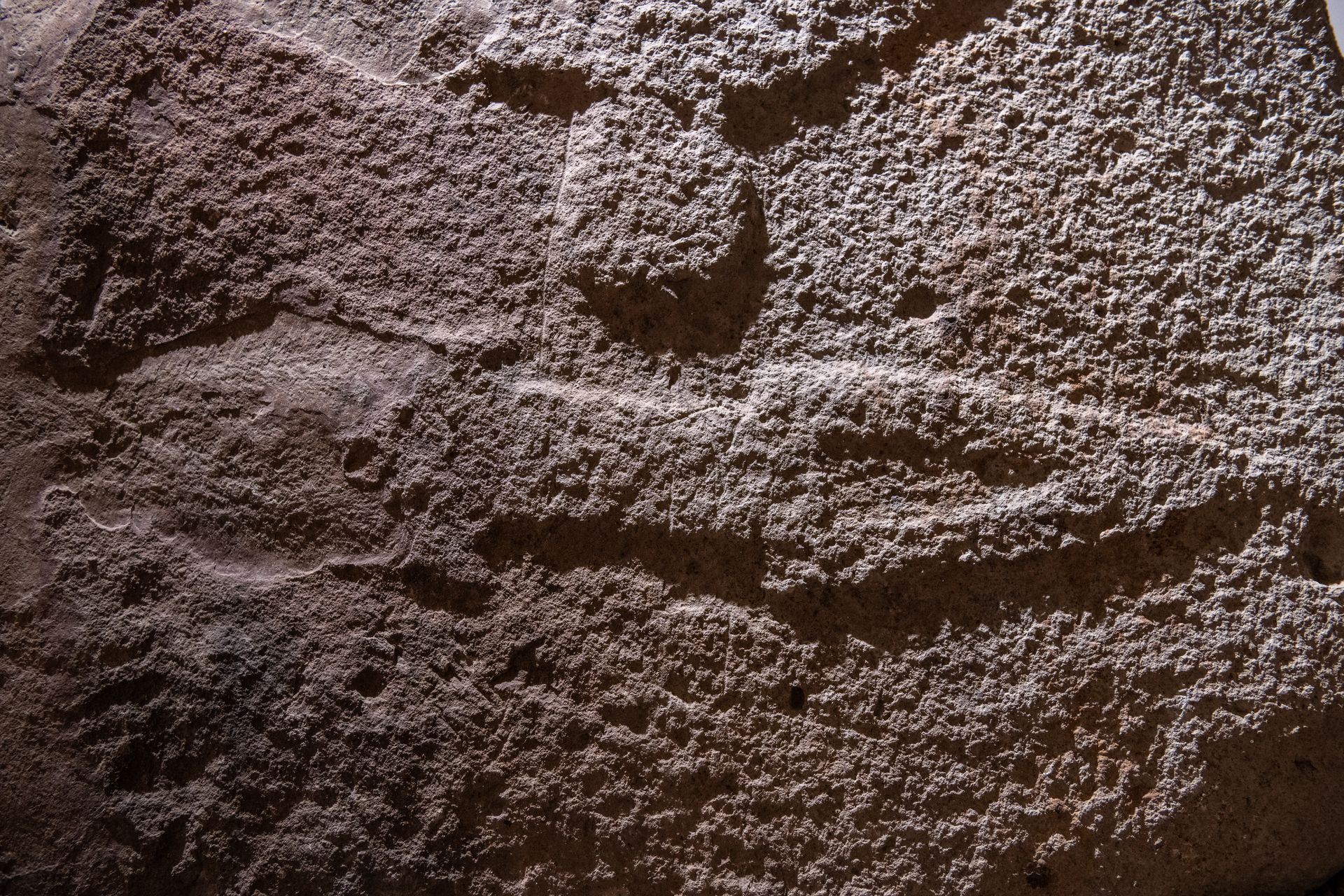 Menhir museum, Piscina 'e Sali III menhir, detail of dagger (Ph. Irene Ollargiu)
Menhir museum, Piscina 'e Sali III menhir, detail of dagger (Ph. Irene Ollargiu)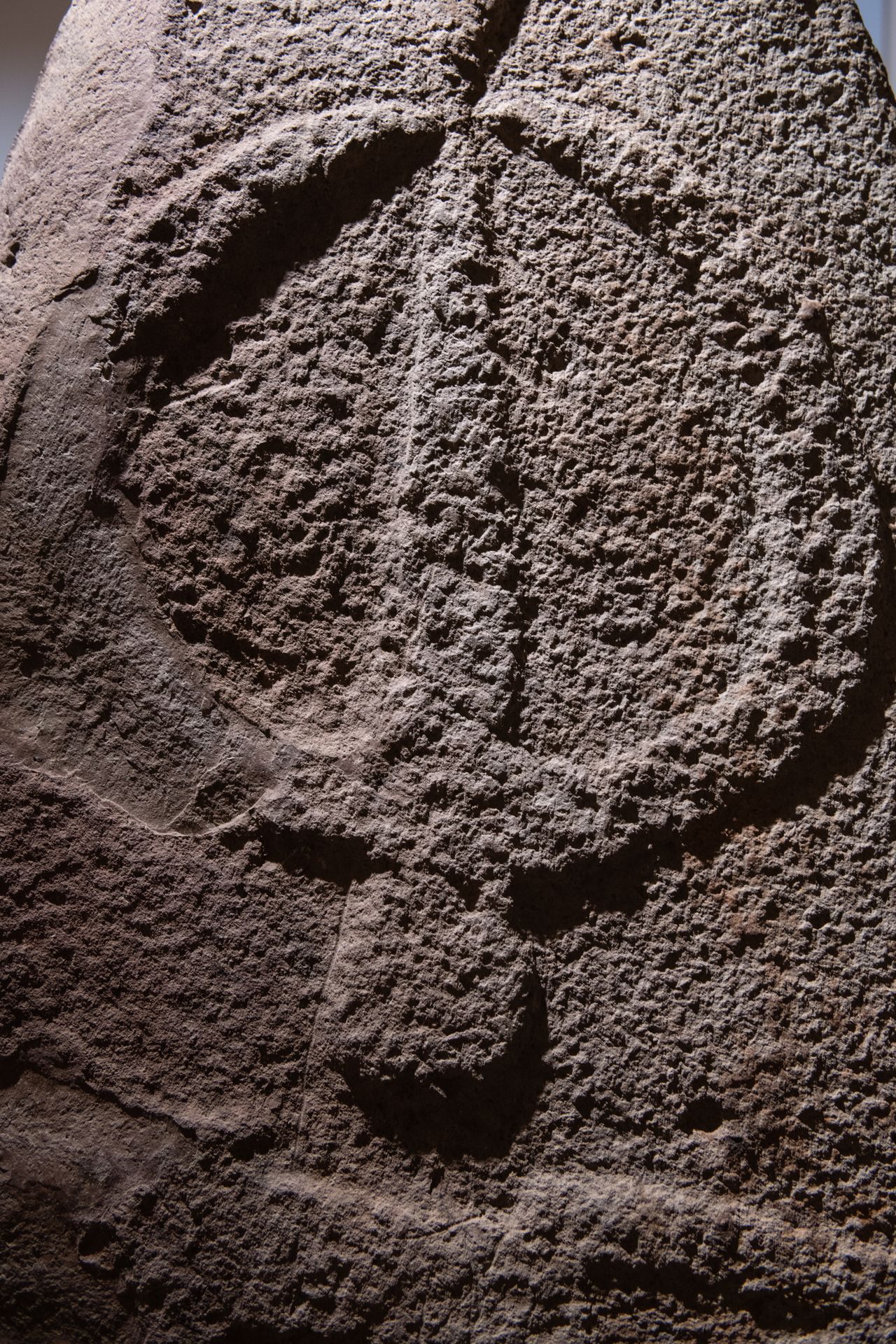 Menhir museum, Piscina 'e Sali III menhir, detail of inverted figure (Ph. Irene Ollargiu)
Menhir museum, Piscina 'e Sali III menhir, detail of inverted figure (Ph. Irene Ollargiu)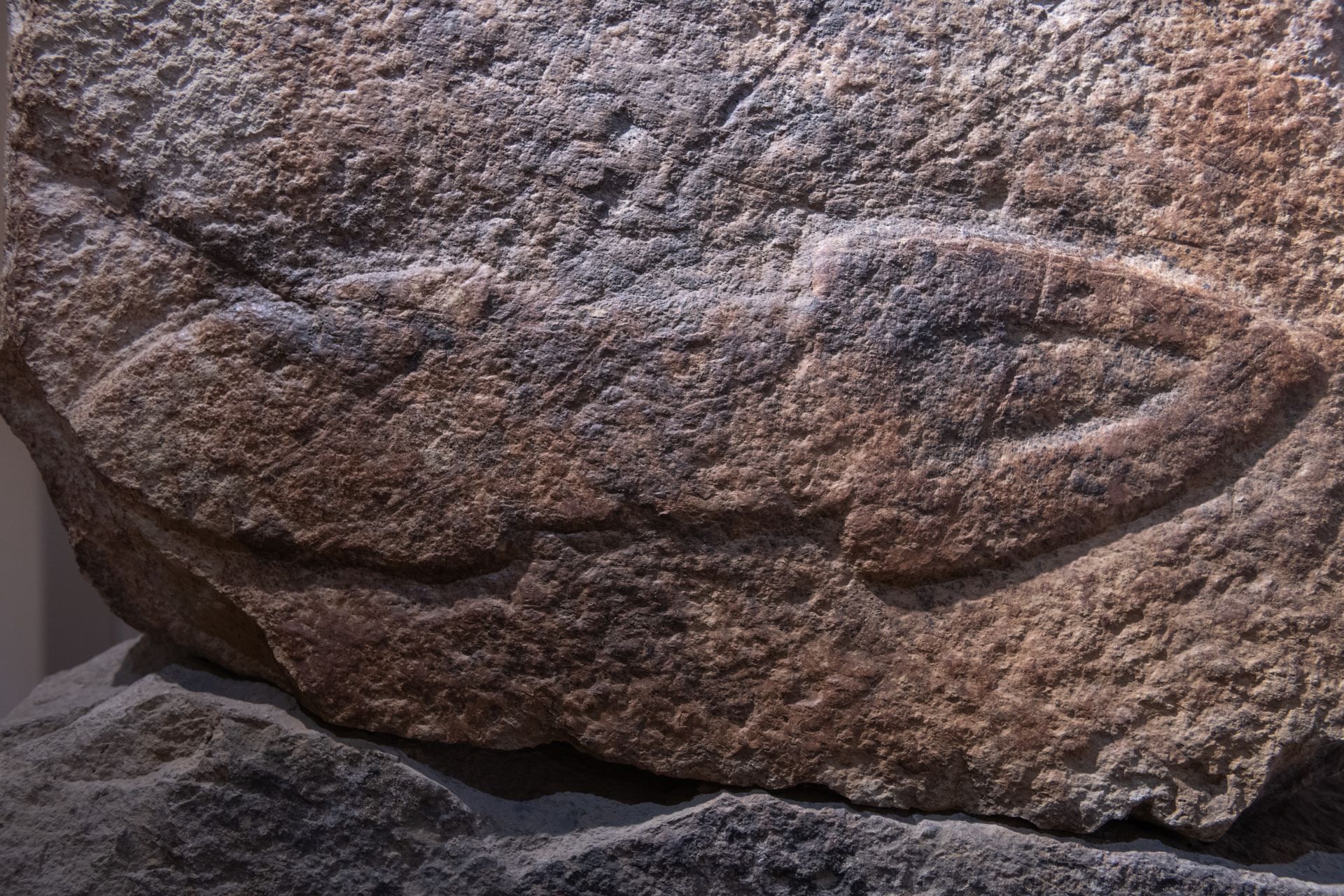 Menhir Museum, Piscina 'e Sali VII, detail of dagger (Ph. Irene Ollargiu)
Menhir Museum, Piscina 'e Sali VII, detail of dagger (Ph. Irene Ollargiu)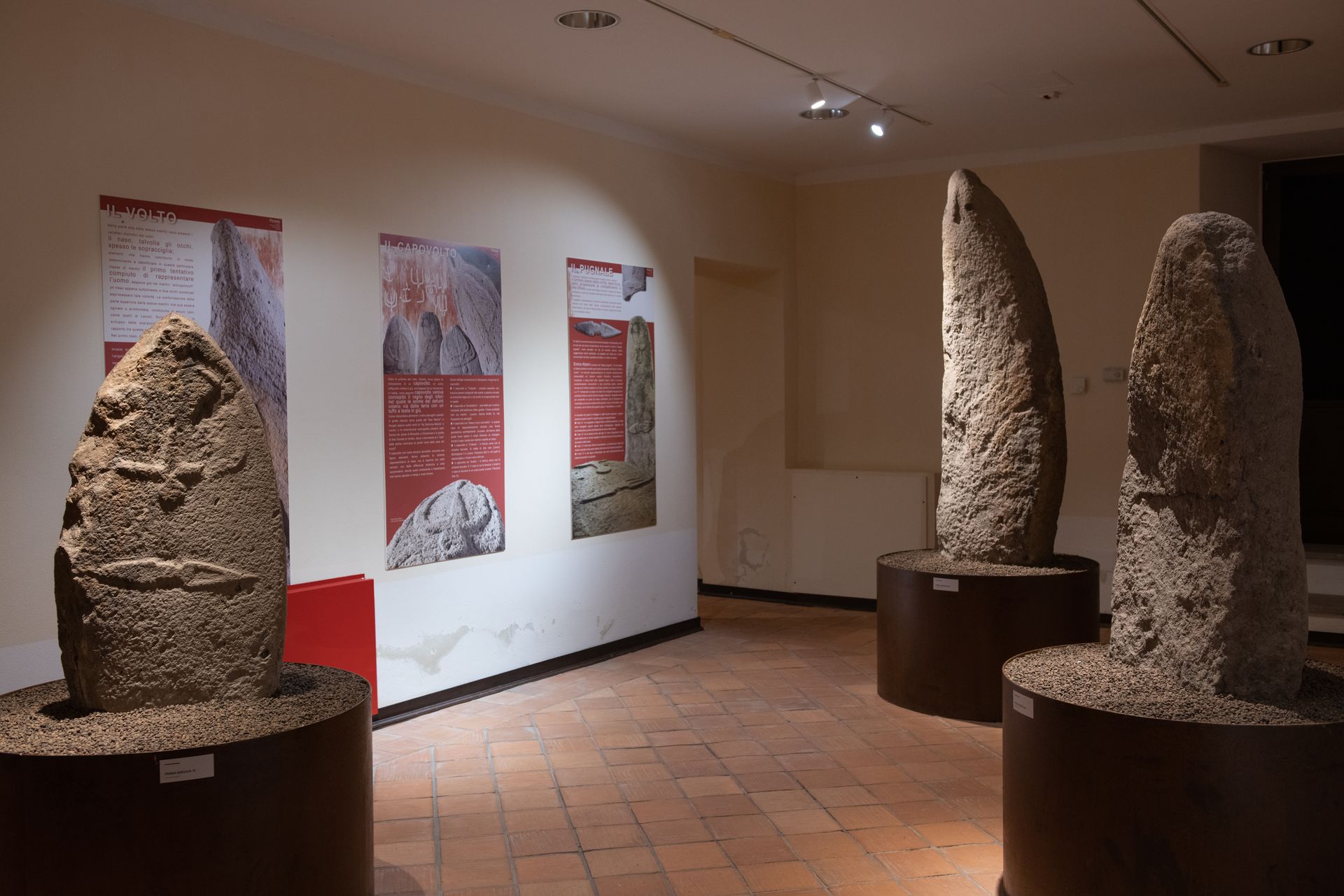 Menhir Museum, room 3 (Ph. Irene Ollargiu)
Menhir Museum, room 3 (Ph. Irene Ollargiu)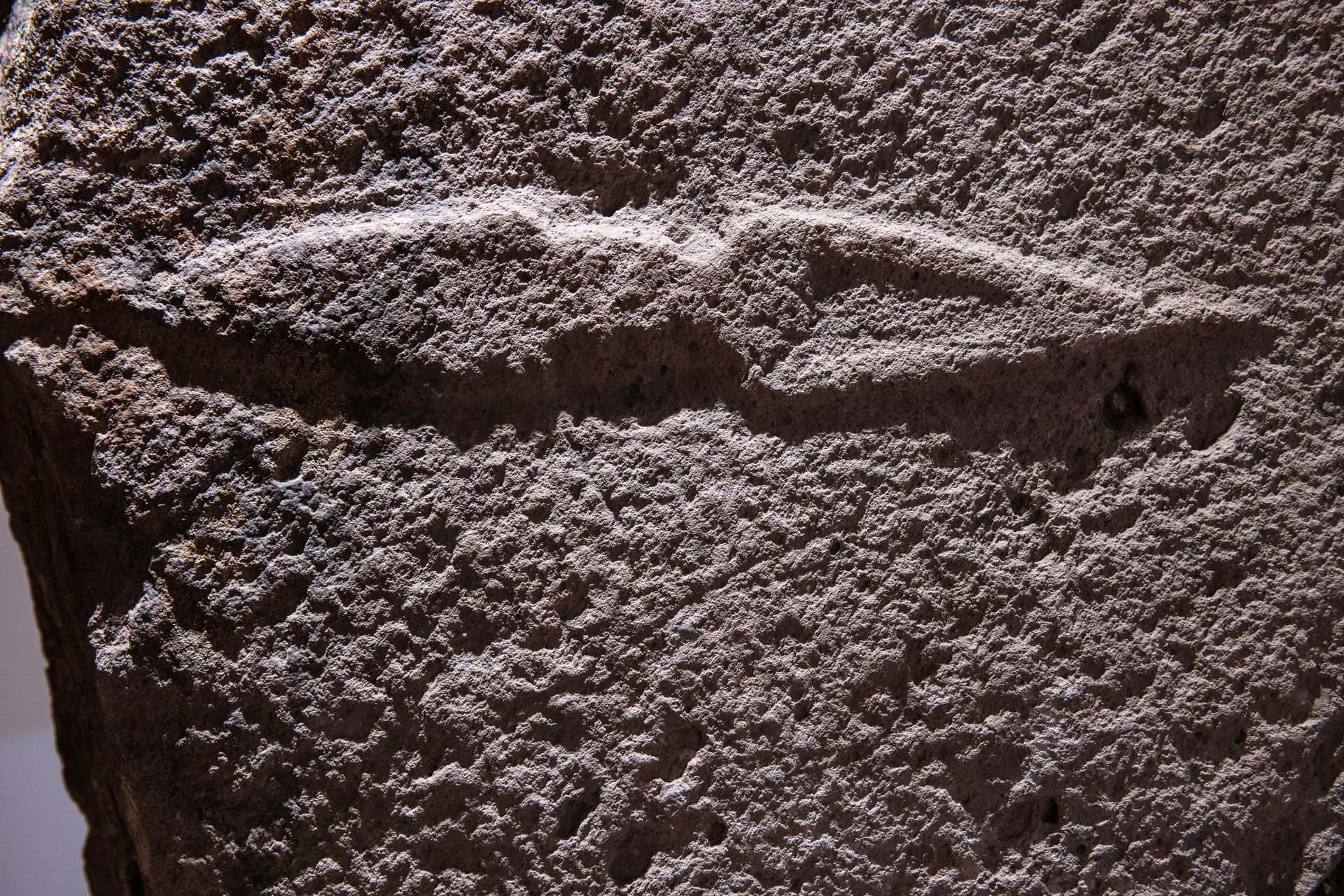
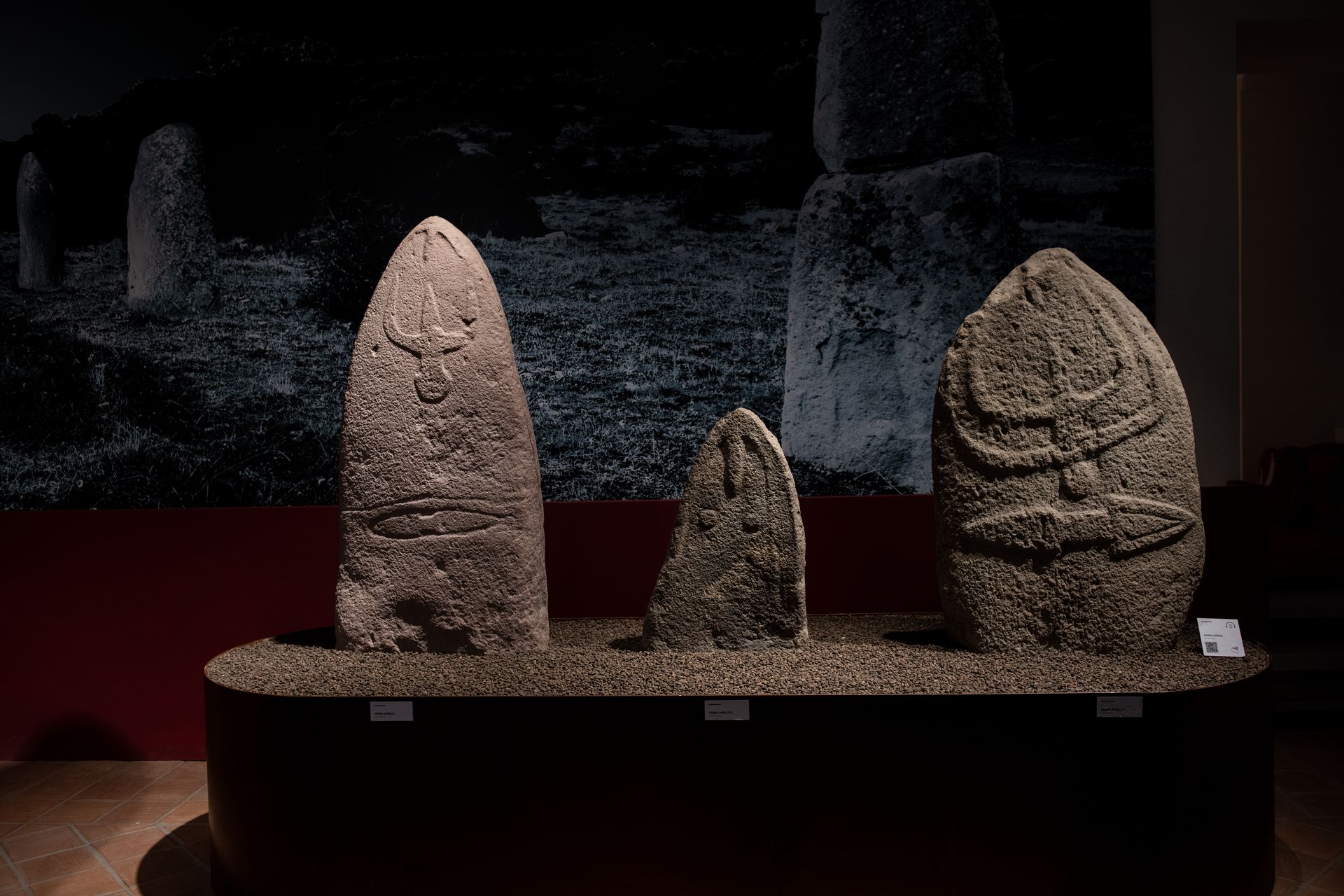 Menhir museum, hall (Ph. Irene Ollargiu)
Menhir museum, hall (Ph. Irene Ollargiu)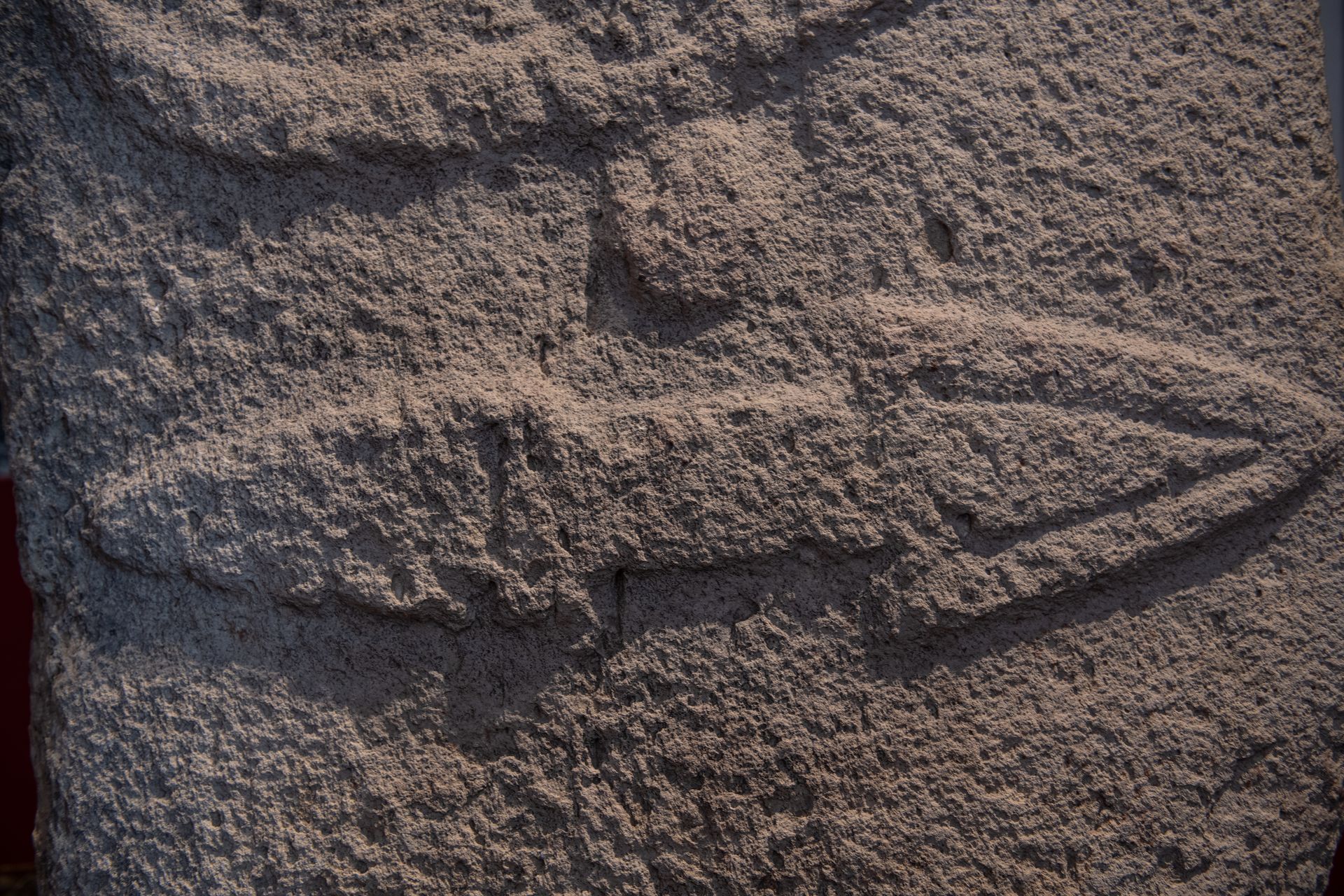 Menhir museum, Genna Arrele II menhir, detail of dagger (Ph. Irene Ollargiu)
Menhir museum, Genna Arrele II menhir, detail of dagger (Ph. Irene Ollargiu)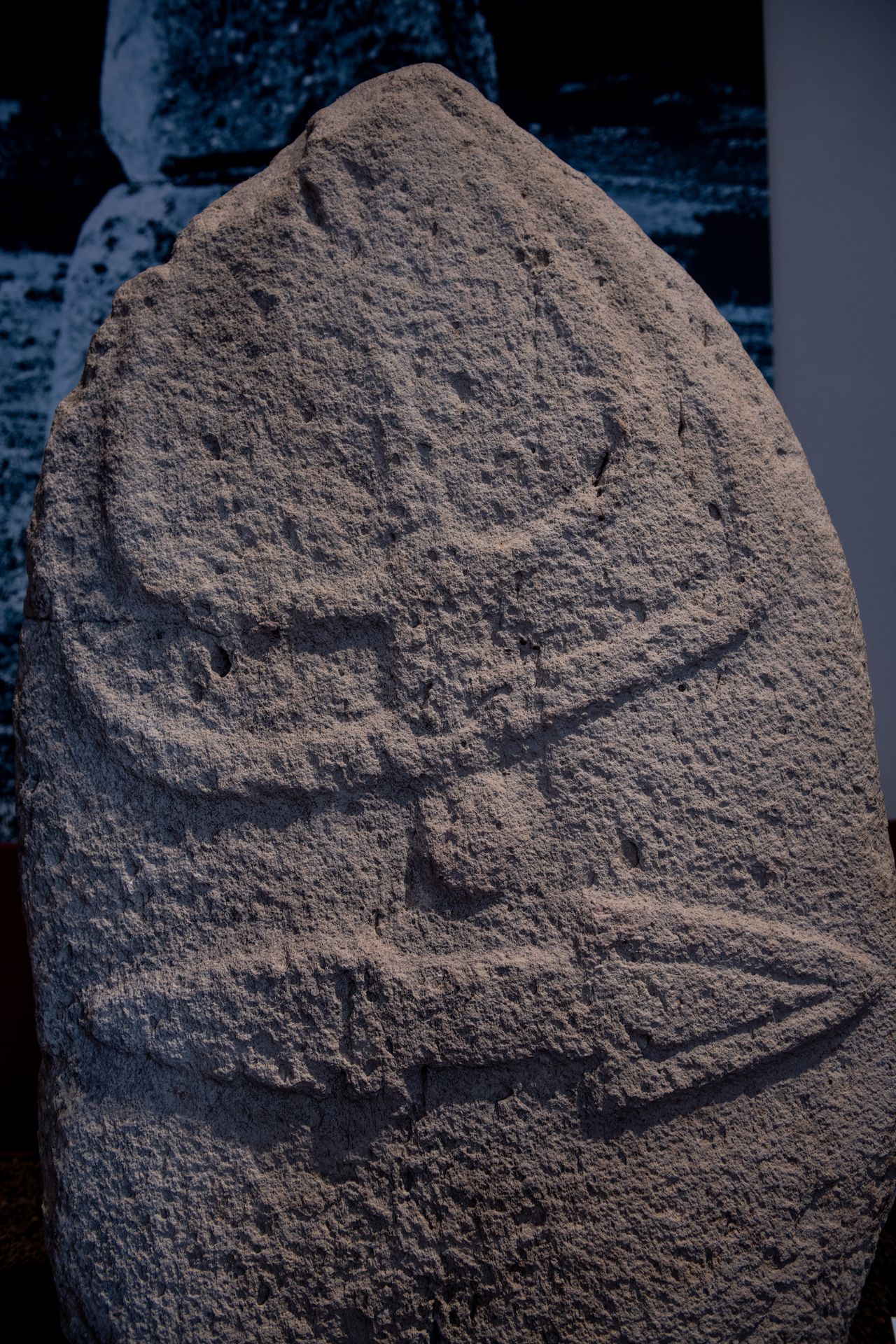 Menhir museum, Genna Arrele II menhir, detail of inverted figure (Ph. Irene Ollargiu)
Menhir museum, Genna Arrele II menhir, detail of inverted figure (Ph. Irene Ollargiu)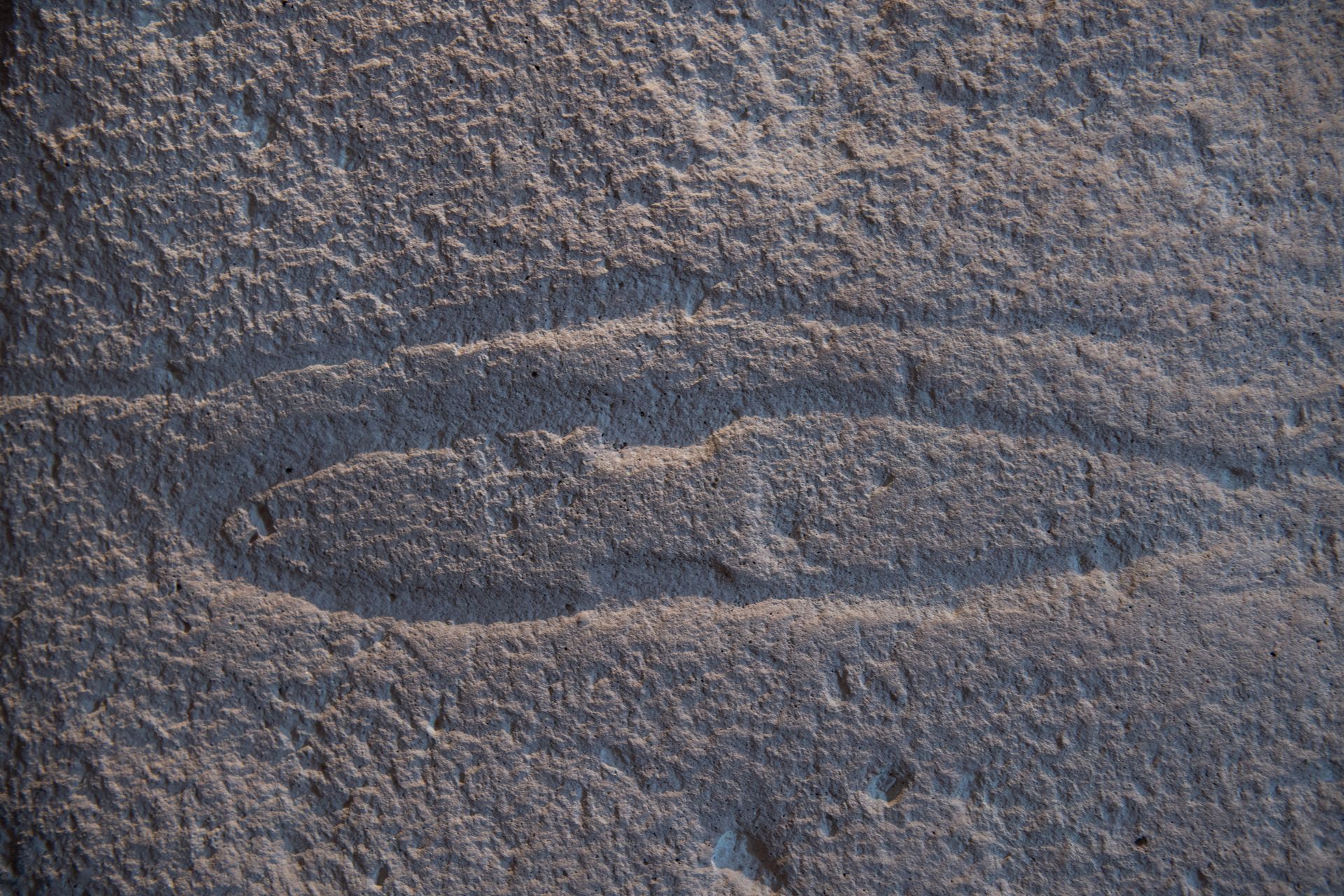 Menhir museum, Genna Arrele I menhir, detail of dagger (Ph. Irene Ollargiu)
Menhir museum, Genna Arrele I menhir, detail of dagger (Ph. Irene Ollargiu)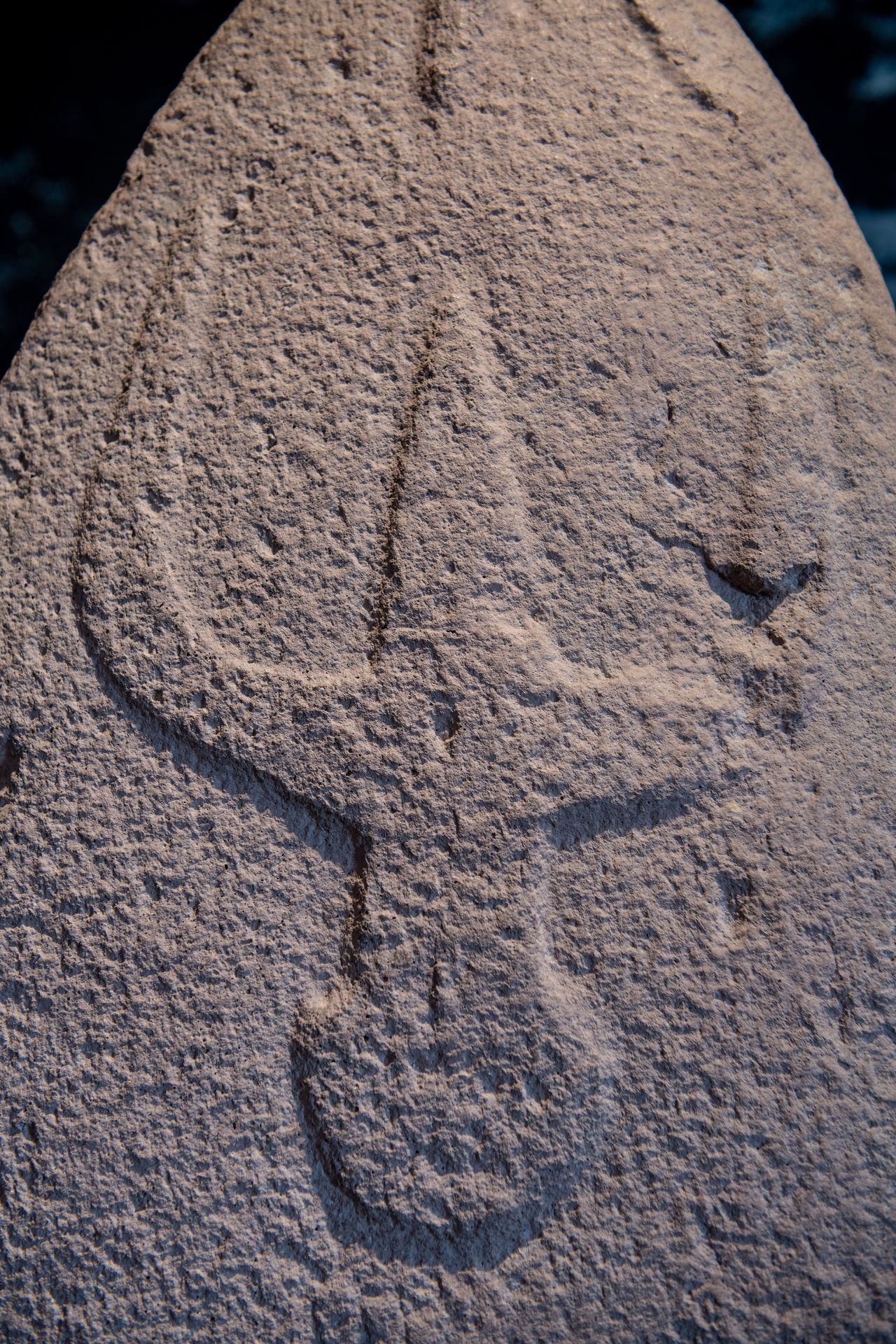 Menhir museum, Genna Arrele I menhir, detail of inverted figure (Ph. Irene Ollargiu)
Menhir museum, Genna Arrele I menhir, detail of inverted figure (Ph. Irene Ollargiu)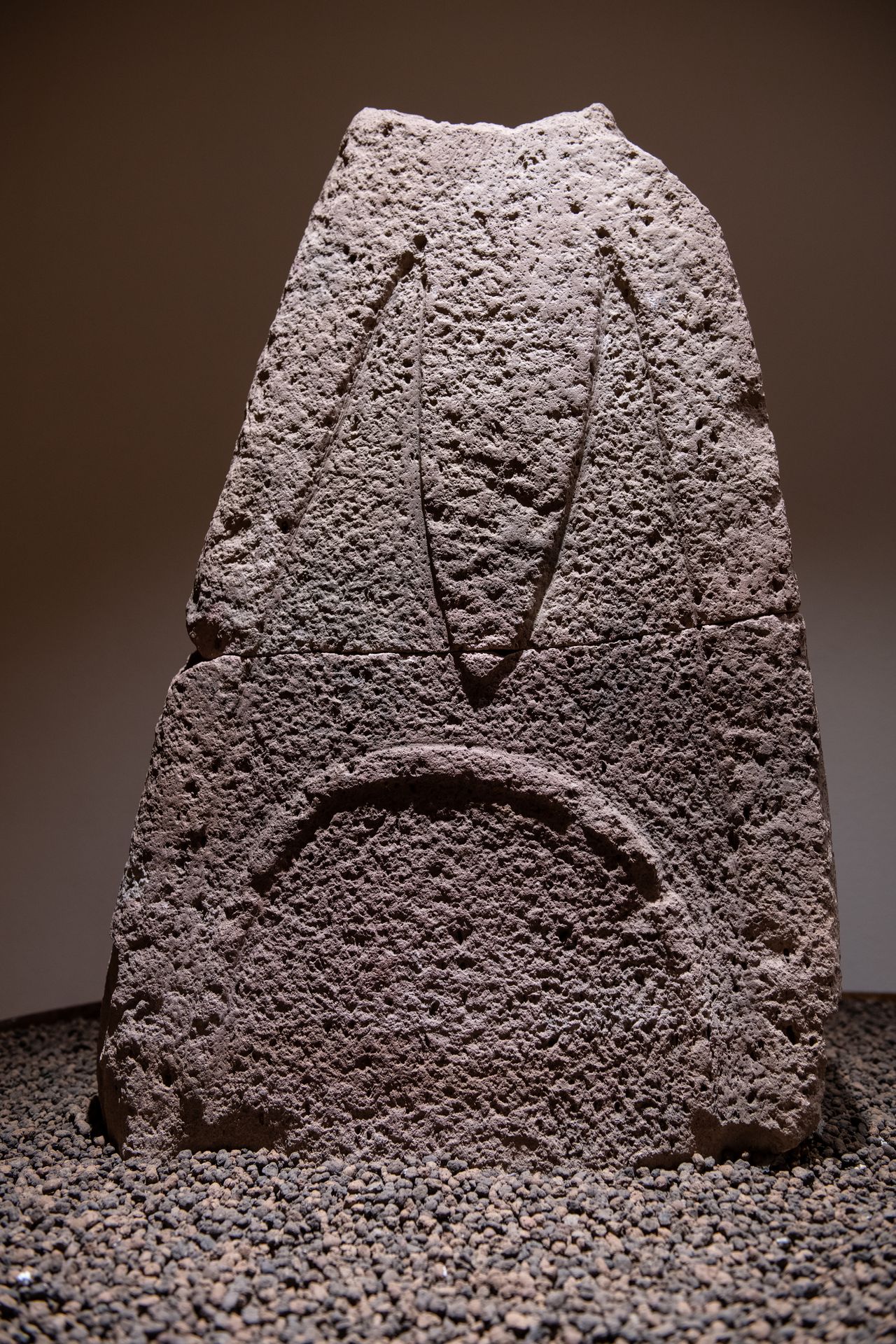 Menhir museum, Paule Luturru menhir (Ph. Irene Ollargiu)
Menhir museum, Paule Luturru menhir (Ph. Irene Ollargiu)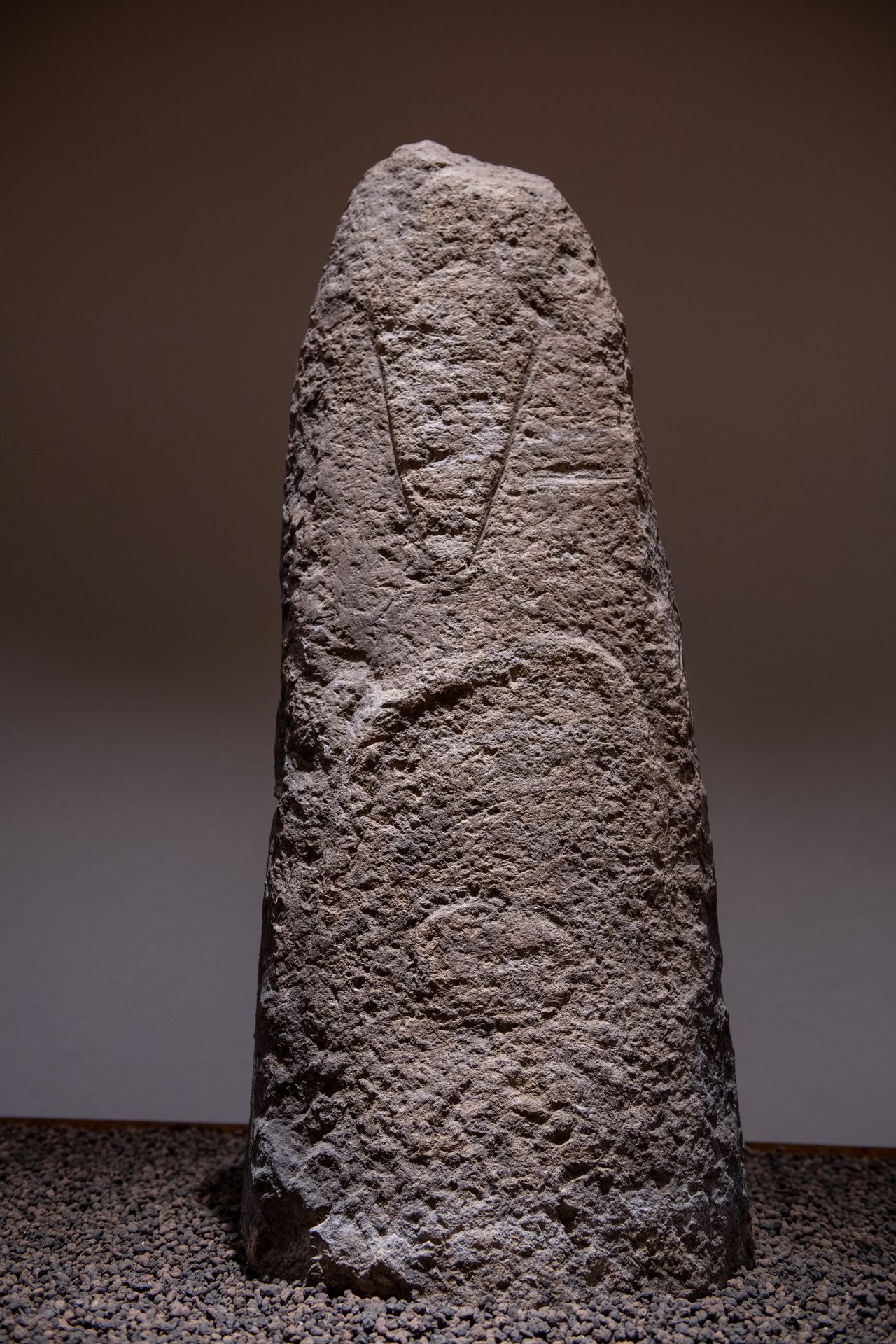 Menhir museum, Paule Luturru menhir (Ph. Irene Ollargiu)
Menhir museum, Paule Luturru menhir (Ph. Irene Ollargiu)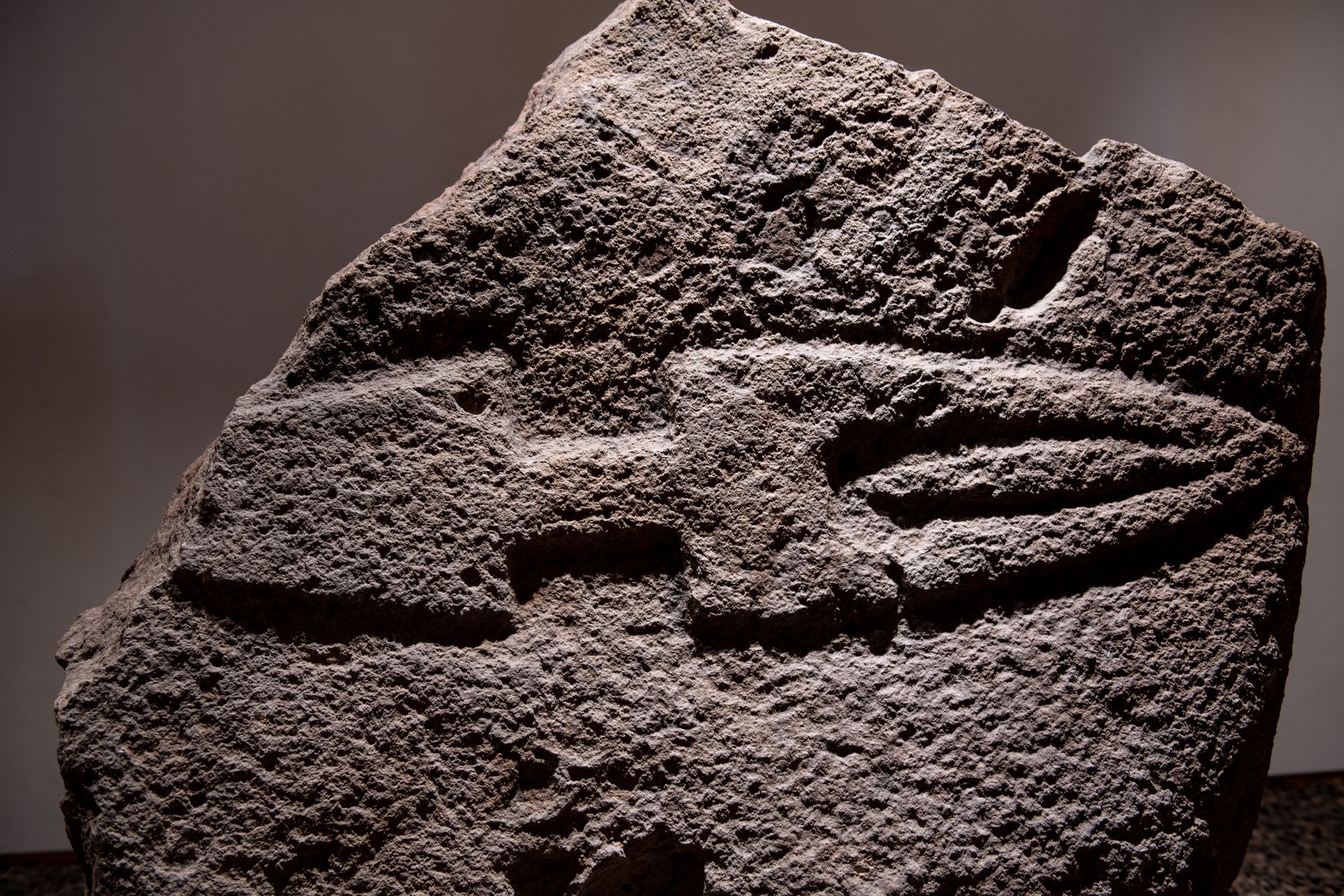 Menhir museum, Palas de Nuraxi II menhir, detail of dagger (Ph. Irene Ollargiu)
Menhir museum, Palas de Nuraxi II menhir, detail of dagger (Ph. Irene Ollargiu)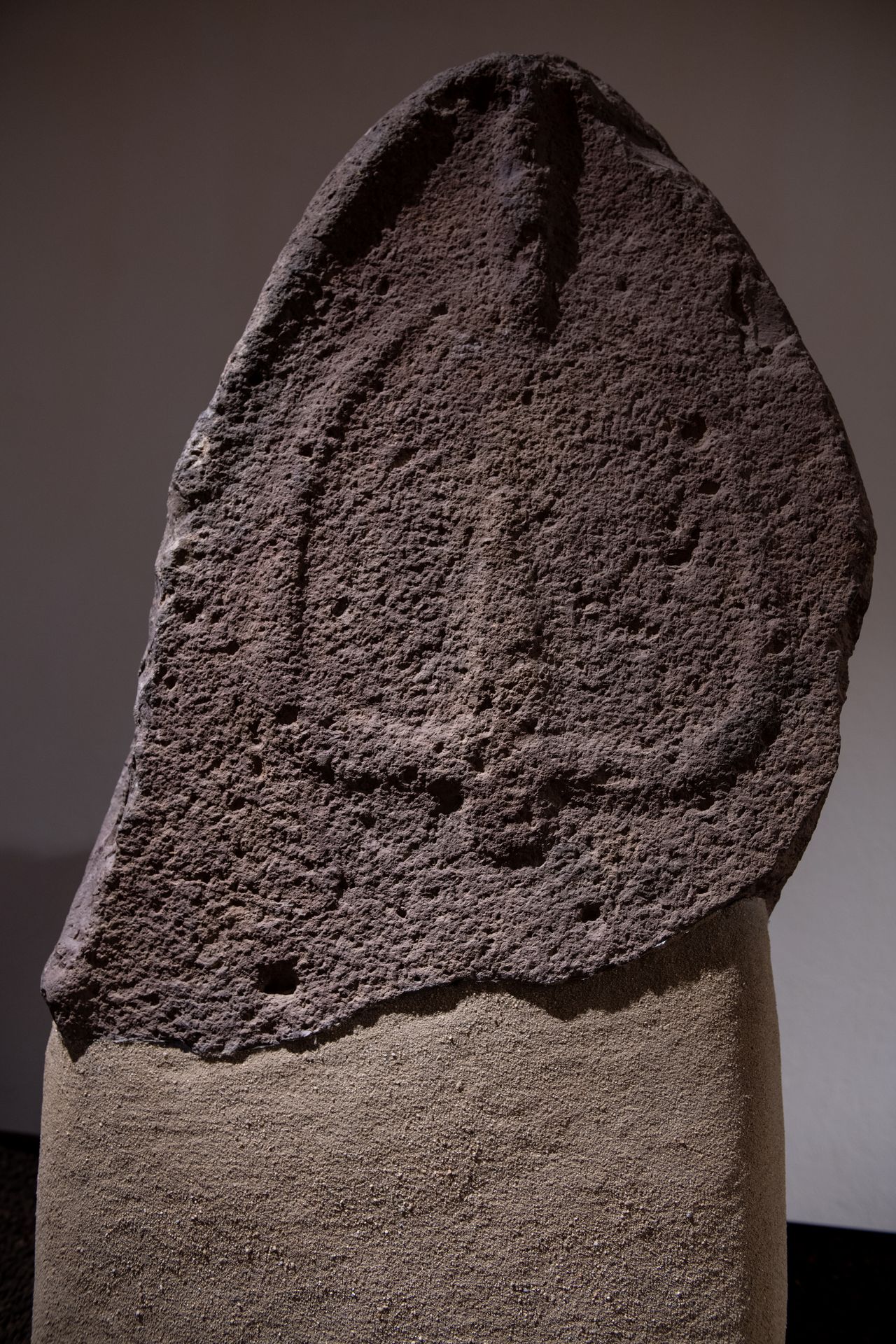 Menhir museum, Nuraghe Orrubiu IV menhir, detail of face and inverted figure (Ph. Irene Ollargiu)
Menhir museum, Nuraghe Orrubiu IV menhir, detail of face and inverted figure (Ph. Irene Ollargiu)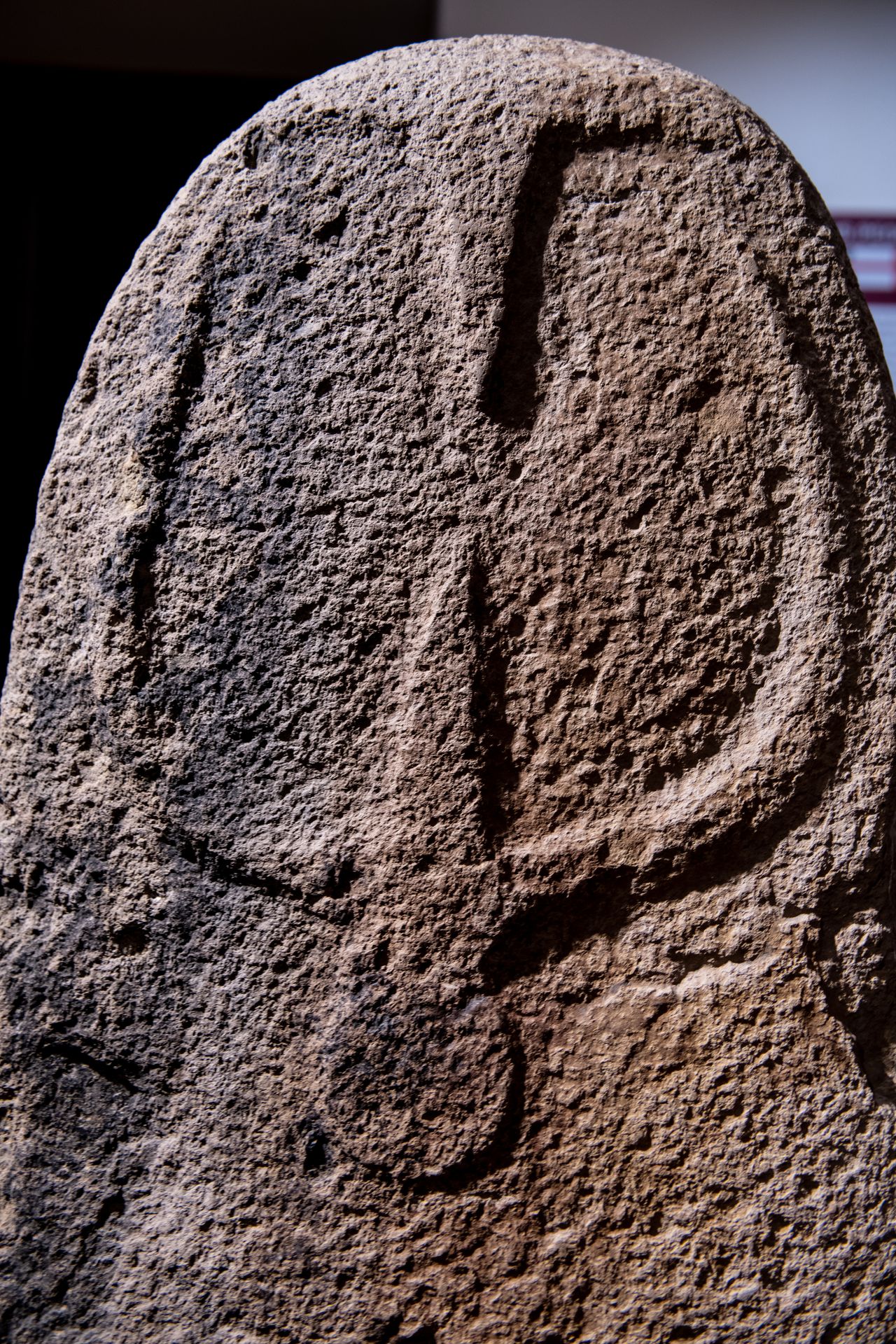 Menhir museum, Bau Carradore II menhir, detail of face and inverted figure (Ph. Irene Ollargiu)
Menhir museum, Bau Carradore II menhir, detail of face and inverted figure (Ph. Irene Ollargiu)